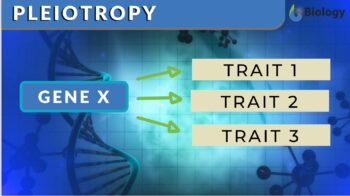
Pleiotropy
n., plural: pleiotropies
[plaɪˈɒtɹəpi]
Definition: the condition of having multiple effects, as in pleiotropic gene.
Table of Contents
Pleiotropy Definition
When one single gene starts affecting multiple traits of living organisms, this phenomenon is known as pleiotropy. A mutation in a gene can result in pleiotropy. One example of pleiotropy is Marfan syndrome, a human genetic disorder affecting the connective tissues. This disease commonly affects the eyes, heart, blood vessels, and skeleton. Marfan Syndrome is caused by a mutation in a human gene resulting in pleiotropy.
trepein, meaning “influencing”.
Is Cystic Fibrosis an example of pleiotropy?
Cystic fibrosis is a genetic disorder and is one of the common examples of pleiotropy. In this disorder, lung infections are persistent. This disease can also affect the digestive system and other organs in the body. Mutation in the “cystic fibrosis transmembrane conductance regulator gene” stops the proper function of this gene resulting in cystic fibrosis.
Is albinism a pleiotropy?
Yes, albinism is also due to a pleiotropic gene caused by a mutation of the tyrosinase (TYR) gene. The mutation alters the production of melanin in the body of the affected individual.
Genes that control the behaviors and functionality of multiple genes that have unrelated features are called pleiotropic genes. Sometimes it has been observed that those traits are very similar in nature while on many occasions they tend to be very non-identical with others. The problems that arise due to pleiotropic genes are sometimes referred to as pleiotropic traits. (See Figure 1)
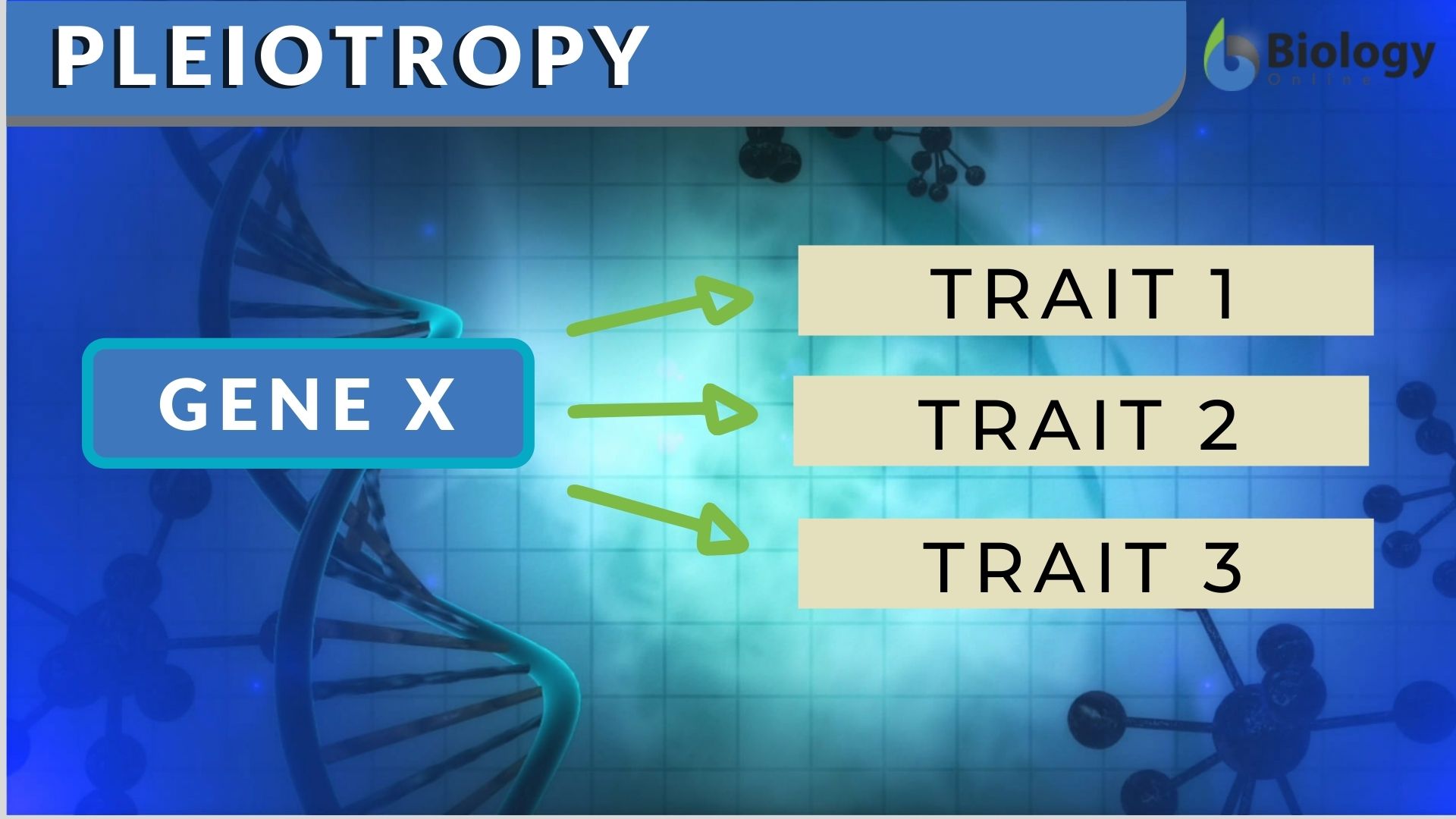
How does a gene affect the traits of a human?
The traits that are physically expressed such as body shape, height, color, physique, and height are known as the phenotype. A single gene trait can be defined as a trait governed or controlled by a particular gene. It may be difficult to detect the existence of pleiotropic traits unless the process of mutation occurs in the gene.
The relative changes that occur in the sequences of the DNA are called mutations. The most common type of gene mutation is the point mutation that is further classified into silent mutations, nonsense mutations, and missense mutations. (Learn more about gene mutations: free Tutorial on Genetic Mutations)
It has been observed via various literature that the two alleles, which are the variant form of a gene, usually determine the nature of the traits. The production of proteins that derive the process of phenotypic trait development is determined by the combinations of the specific allele, whereas the DNA sequence of the gene is altered by the mutation occurring in the gene. Thus, the nonfunctioning of the proteins is the outcome of the changes in the gene segment sequences. Hence, in the process of pleiotropy, all the available traits that are associated with a single trait will be changed by the progressions in the mutation.
Pleiotropy in genetics
The idea of pleiotropy in biology was given by a famous geneticist, Gregor Mendel, who is known in history due to his remarkable achievements in pea plants. He went through a series of experiments with purple-flowered plants and white-flowered plants. He noticed that the colored flowers and colored leaf axils are always shown by the plants with colored seed coats. The parts of the plants that are connected to the stems are called an axis.
He witnessed that specifically in the pea plants, which were the center of the research, always showed the white flowers even though the seed coats were colorless in nature with no pigmentation in their axis. Thus, after summarizing his research, it was concluded that the color of the axil of the plant and the seat coat are the important factors that are going to decide the color of that whether the plant is going to exhibit the white flowers or the purple one. Thus, today these observations have been considered due to the result in pleiotropy where a single gene contributes to multiple phenotypic traits.
Pleiotropy can often arise because of very overlapping but distinct mechanisms such as development pleiotropy, gene pleiotropy, and selectional pleiotropy.
In gene pleiotropy, the focus is made on the functionality of the particular gene and this form of pleiotropy is also known as the molecular gene pleiotropy. The number of traits and the biochemical factors impacted by the gene usually determine the functions of a particular trait. The number of enzyme reactions catalyzed by the protein products of the gene is included in the biochemical factors.
The main focus that is made in the development of pleiotropy is on mutations and their relative impact on the many traits. It is seen that the mutations in the single gene usually have broader effects in changing several other possible traits. Moreover, the diseases that involve mutational pleiotropy, are categorized by deficiencies in the many organs which affects the smooth working of many-body systems.
The last mechanism that results in the pleiotropy is called selectional pleiotropy, whose prime focus is on the effect of gene mutations on the number of separate fitness components. The process by which the particular organism transfers its genes from its generation on to the next generation through sexual reproduction is usually determined by their fitness levels of them. The selectional pleiotropy is often concerned with the impacts of the selection on traits naturally.
Polygenic vs pleiotropy
It has been a very common observation that many people mix the meaning of polygenic inheritance with pleiotropy. The major reason that differentiates them is that when a single gene affects multiple characteristics is called pleiotropy whereas when a single trait is controlled by many of the multiple genes comes under the definition of polygenic inheritance such as skin pigmentation.
Pleiotropy vs epistasis
Another important thing is to understand the concept and meaning of epistasis and its relation to pleiotropy. The interaction of multiple genes in determining the phenotypic outcomes is known as epistasis. (Ref. 1)
The study of the pleiotropic gene is of significant importance in biology as it assists in understanding how certain genes are often seen participating in some of the genetic disorders.
There are many examples of pleiotropy that can easily be found in nature. Fruit flies and vestigial gene, chickens and their frizzle traits, the process of pigmentation and deafness in cats, the pleiotropy sickle cell diseases in humans, and phenylketonuria (also written as PKU), are some of the common examples of pleiotropic conditions. They are elaborated below.
Pleiotropy Examples
The examples of pleiotropy that are found in various literature studies are due to the influence of both direct and indirect pleiotropy. For instance, the example of a blind mouse born due to the alterations in a single gene can be taken and in the said examples, the chances are very high that the blind born mouse will be very poor in the visual learning of tasks confirming that a single gene is seen involved in multiple pathways. Thus, there are many such examples of both direct and indirect pleiotropy, some of which are elaborated below sections.
The Vestigial Gene and the Fruit Flies
The vestigial genes play a very significant role in the development of the wing of the Drosophila, which is a fruit fly. They develop short wings and are unable to fly in the appropriate way if these flies are subjected to the homozygous for the recessive form of the vestigial gene (VG). Thus, the vestigial gene is pleiotropic that results in the lack of development of the wings of the fruit fly drosophila. Moreover, the reduced numbers of eggs present in the ovaries of the flies, the change in the places of the bristles on the scutellum of the flies, and the reduced time span of the life cycle of the flies are some other indirect effects of the pleiotropy in the fruit flies. The elaboration of the pleiotropy is shown in Fig 2. It can be seen that the wings in the first bee are not fully developed as compared to the second bee that has fully grown wings. (Ref. 2)
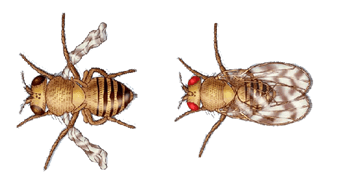
Deafness and Pigmentation in Cats
It has been reported that around forty percent of cats that exhibit white fur and blue eyes are found to be deaf (Figure 3). Although this fact is quite fascinating as we probably haven’t paid attention to these cats in our entire life. It was observed at the early stages of the research that the white cats that have one blue eye and another yellow eye were blind from the one eye and that was mostly the blue eye but later one it was seen that this phenomenon of blindness is not always valid to all breeds of the cats. In humans, a similar disorder is Waardenburg syndrome.
In cats, this condition involves pleiotropic genes causing not just deafness but also affecting pigmentation. Researchers aimed to understand how hearing capacity and the process of pigmentation are correlated. The experiments were carried out in mice and they found that pigmentation plays a very key role in maintaining the flow of fluids in the canals of the ear. Those lacking in pigmentation also lacked the flow of fluids in the ear canals, which results in its bursting, and eventually to deafness. (Ref 3)

Frizzle Traits in Chickens
There are various genes that are exhibited by the chickens as a result of pleiotropic genes. It was observed by Walter Landauer and Elizabeth Upham in 1963 that the chickens that exhibit the dominant frizzle genes mostly produce feathers that curl on their whole bodies instead of lying flat against their skin. This effect was related to the phenotypic effects of the genes. Additionally, it was seen that these frizzle traits caused many changes in the chickens among which the abnormal body temperatures, high blood flow rates, high metabolic rates, and boosted capacity in the digestive are the notable ones. Furthermore, the chickens showing the pleiotropic traits laid fewer eggs as compared to the normal wild eggs that affected their reproduction rates. The existence of the frizzle traits in the chicken can be seen in the video below.
Marfan syndrome
The inherited disorder that results in connectivity issues in the tissues is called the Marfan syndrome. This type of syndrome mostly affects the eyes, heart, skeleton, and blood vessels. The people suffering from these syndromes are usually long heightened, thin bodies with long legs, arms, fingers, and toes whereas there may be mild or severe damages caused by the Marfan syndrome. The symptoms of the syndrome may vary from one family to another and it also depends on the age where some feel very low symptoms and many face life-threatening complications. Aortic aneurysm, aortic dissection, and valve malformations are the results of cardiovascular complications. On the other hand, eye complications, lens dislocations, retinal problems, and early-onset glaucoma also known as cataracts are very important. (Ref. 4)
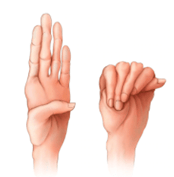
Sickle Cell Disease
The very common examples of pleiotropy that usually occurs in human beings are called sickle cell disease which occurs due to the disorder developed irregular shaped red blood cells whereas the normal red blood cells have a biconcave, disc-like shape, and extensive quantities of hemoglobin are found.
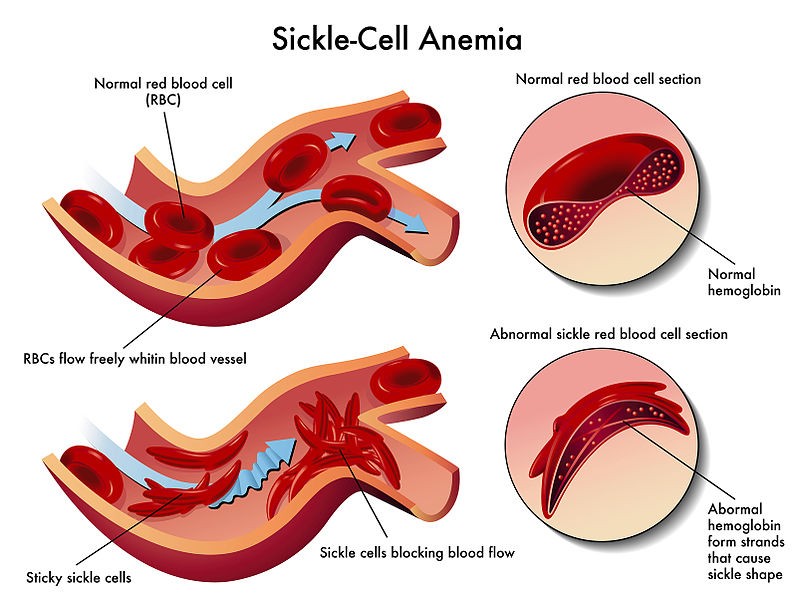
How is sickle cell anemia an example of pleiotropy?
The prime responsibility of the red blood cells in the blood is to bind the tissues and to transport oxygen to all available cells. The mutations in the beta-globin gene generally result in the formation of sickle cells. Thus, the blood cells that are irregular in shape, clustering together, forming a block in the veins and finally blocking the flow of blood in the veins. This blockage results in many health problems and causes damages to many vital human organs such as the heart, brain, and lungs. The comparison between the normal red blood cell and the sickle cells has been shown in Figure 5. (Ref. 5)
Phenylketonuria or PKU
Another common example of pleiotropy is Phenylketonuria or PKU which causes mental retardation, reduction in hair, and change in skin colors or pigmentation. These diseases usually occur in a large number of mutations in a single gene on a chromosome. These genes are responsible for the production of enzymes known as phenylalanine hydroxylase. These enzymes generally break down the amino acids phenylalanine that we get from the digestions of the proteins. If due to pleiotropy, the level of amino acids increases, this causes the nervous system to be damaged.
Intellectual disabilities, heart problems, developmental delays, and seizures are some of the other disorders that are caused by phenylketonuria. The most common PKU is called classic PKU, which typically affects newborns. The frequency of these diseases varies from one location to another. Specifically, in the United States, one out of ten thousand births suffer from this disease. However, the good thing is that the doctors can detect PKU in babies via their early symptoms, which allows the doctor to start the early treatments thus saving the children from severe effects of this disease.
Antagonistic Pleiotropy
A theory proposed to explain the senescence or biological aging that can be attributed to the natural selection of certain pleiotropic alleles is called antagonistic pleiotropy. An allele that might have a negative impact on the organism can be favored in natural selection if the allele also produces advantageous factors in antagonistic pleiotropy. Moreover, the alleles that increase reproductive fitness early in life but promote biological aging later in life are normally selected in natural selection.
The most common example of antagonistic pleiotropy is the sickle cells where the Hb-S allele mutation of the hemoglobin gene provides various advantages and disadvantages for their survival. The homozygous for the Hb-S allele that possesses a couple of Hb-S allele of the hemoglobin allele to have a relatively shorter span of living due to negative impacts of the sickle cells traits whereas the heterozygous traits that usually have one normal allele and single Hb-S allele are strongly resistant to malaria and don’t experience the same degree of negative symptoms. Moreover, it can be concluded that the frequency of the Hb-S allele is higher in the geographical locations where the rates of transfer of malaria are higher.
The alleles that cause the death of the person that carries them are called lethal alleles. Generally, they are the outcome of the mutations genes that are extremely vital for the development and the growth of the individuals. An allele can be dominant, recessive, or codominant. A codominant allele example is a person with an AB blood group wherein the person has both alleles, i.e. allele A and allele B.
Summary
It can be summarized from the above discussion that the property that shows that multiple genes have many phenotypic effects is called pleiotropy. Pleiotropy can often arise through some of the very overlapping but distinct mechanisms such as development pleiotropy, gene pleiotropy, and selectional pleiotropy. In gene pleiotropy, the major focus is on the functionality of the particular gene while in development and selectional pleiotropy the focuses are on the mutations and their relative impact on the many traits and the effect of gene mutations on the number of separate fitness components respectively. The study of the pleiotropic gene is of significant importance in biology as it assists in understanding how certain genes are often seen participating in some of the genetic diseases as there are many genetic diseases that are cited in the literature that are caused by pleiotropy. Deafness and pigmentation in cats, the existence of frizzle traits in cats, Marfan syndrome in humans, sickle cell diseases, Phenylketonuria or PKU, albinism, Austin, and schizophrenia are some of the many examples of pleiotropic.
Try to answer the quiz below to check what you have learned so far about pleiotropy.
References
1.”Pleiotropy and lethal alleles”. (2018). Khanacademy.org.
2. Muskopf, S. (2020). “Genetics- Lop Ears”. Biologycorner.com, 2020.
3. Rajaratnam, R., Sunquist, M., Rajaratnam, L. and Ambu, L. (2007). “Diet and habitat selection of the leopard cat (Prionailurus bengalensis borneoensis) in an agricultural landscape in Sabah, Malaysian Borneo”. 23,2: 209-217, 2007.
4. Ramirez, F. and De Backer, J. ( 2019). “Marfan Syndrome”. Human Pathobiochemistry: Springer. pp. 241-254.
5. Bailey, R. (2019). “What is Pleiotropy? Definition and Examples”. Thoughtco.com
©BiologyOnline.com Content provided and moderated by BiologyOnline Editors.







